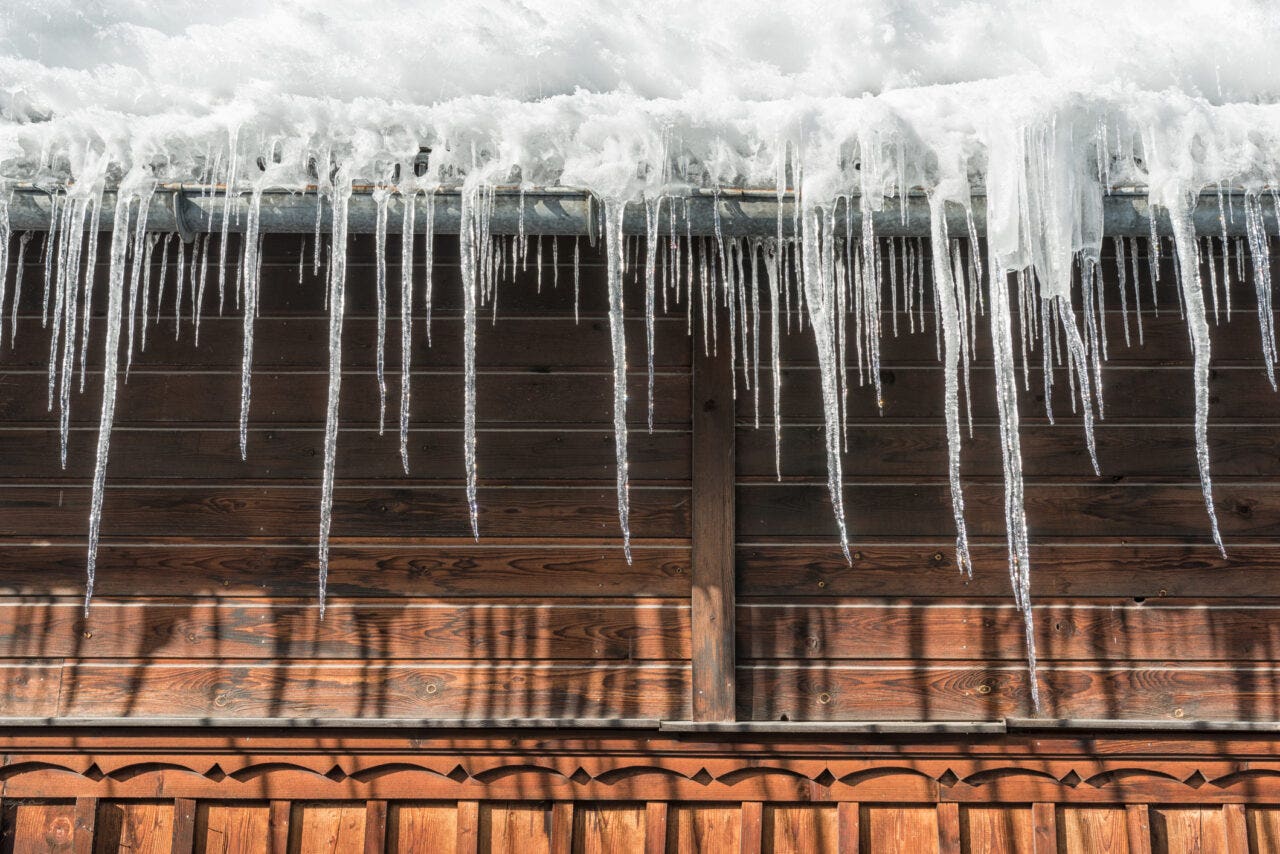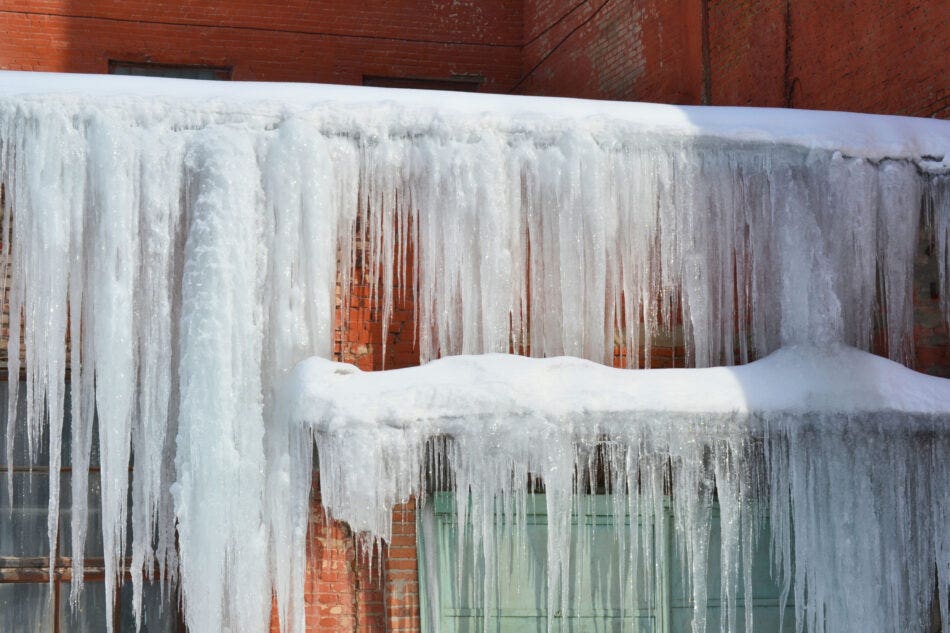A byproduct of the thaw-freeze cycle we see during winter and spring in Alberta are ice dams. Ice dams, or ice damming, are an ice formation on your roof or eaves which can prevent proper drainage and contribute to damage to your home. They can also fall from the roof, potentially injuring anyone below! This article will walk you through how to recognize an ice dam, how to remove it and how to prevent it from occurring in the first place.
This is important as the damage that ice dams can cause your home are not usually covered by your home insurance policy, It is best to contact with your home insurance broker.
How to Identify Ice Damming on Your Home
Ice dams are an ice formation that can develop along your eaves or on your roof. They form over time when a warm attic causes the bottom layer of snow to melt and then re-freeze when it reaches the cooler area of your roof by the eaves. It can also be caused by frequent thaw-freeze cycles, like those caused by chinook winds. This ice layer continues to accumulate and can result in a lack of proper drainage, causing damage to your home.
You’ll see a buildup of ice on your roof, particularly on the edges by the eaves. There are often lots of icicles. You may even see water on your roof behind this blockage.

How to Get Rid of Ice Dams
If you have an ice dam, you will want to get rid of it as soon as possible—but only if it is safe to do so. Here are a few suggestions:
- Use calcium chloride ice melter.
- Use a blunt tool like a mallet to create a small channel to drain excess water buildup behind the dam.
- Get a professional to remove the ice dam, particularly if the situation is urgent!
We do not recommend using any sharp tools like a shovel or axe to chip away at ice as it can damage your roof. Salt can also cause damage to your roof and won’t be as effective as calcium chloride.
How to Prevent Ice Damming
The best way to get rid of ice dams is to prevent them from occurring in the first place. Here are some ways you can prevent ice damming:
- Use a roof rake to remove snow from your roof (or hire a professional).
- Install heated cables to the edge of the roof in a zig zag pattern ahead of winter.
- Seal air leaks in your attic including ducts, hatches, chimneys and other openings with weather stripping and/or caulking.
- Add insulation to your attic.
- Install a wide metal drip edge if you have a shingle roof (although if your roof is very shallow this may not prevent ice dams).
- When it comes time to replace your roof, install a water-repellant membrane underneath your roofing.
Is damage caused by ice dams covered by home insurance?
Generally, home insurance does not cover damage caused by ice dams. This is because ice dams can be prevented with proper maintenance. That’s why it’s important to try to prevent ice damming and to remove them as soon as possible if they do occur.

